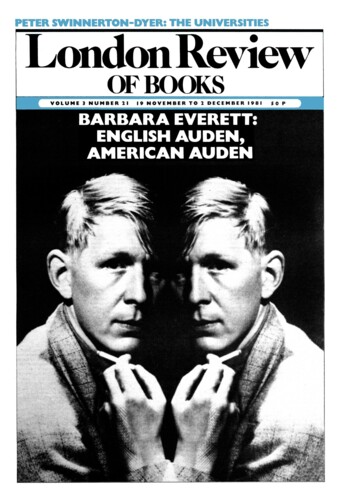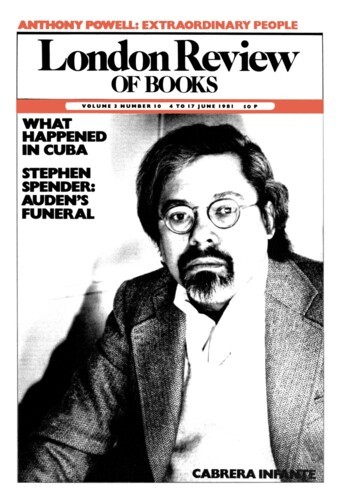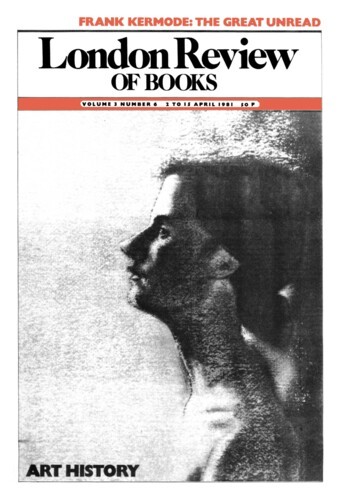Chips
Nicholas Penny, 18 March 1982
When, in the early hours, Michelangelo completed carving his name on the band which passes between the breasts of the Virgin in his first Pieta (the one now behind bullet-proof perspex in St Peter’s), he was surprised by a nun who took him for an intruder. Reassured, she begged for some marble chips, which the sculptor, touched, gave her. In return, she made him a frittata, which he ate on the spot. The prominence of this signature provides, as has long been recognised, startling evidence for the new status of the artist in this period – the sculpture declares itself ‘a Michelangelo’. But the nun wanted the chips not because they were associated with a genius but because they were associated with the Holy Family: she had, in fact, suggested that he give her some marble from Christ’s wound. Michelangelo’s sculpture certainly could appeal to unsophisticated worshippers. They have, for centuries, kissed the extended foot of his Risen Christ – the part Michelangelo was least happy with and which connoisseurs least admire.




